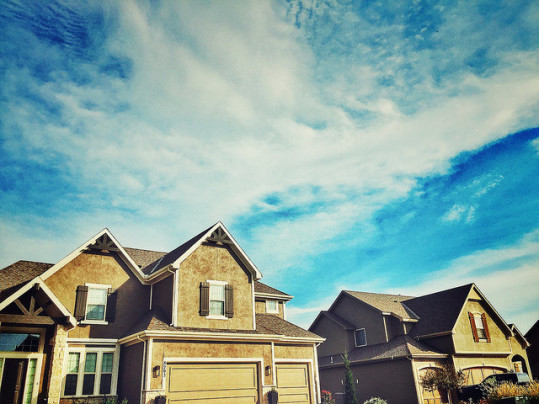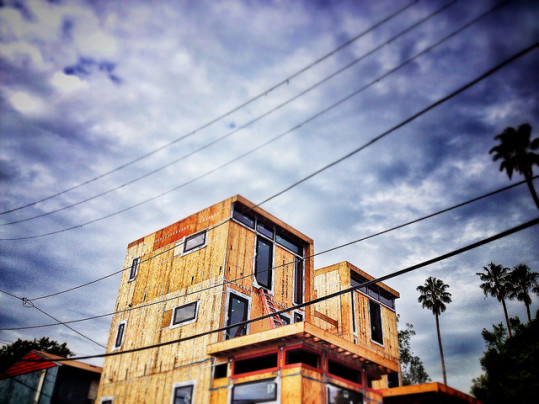There are nearly 85 million residential properties in the United States. How many of those properties are available to potential buyers determines, in part, whether or not home prices rise or fall. When there are a lot of homes available for sale, buyers will be able to find better deals. When there are fewer homes on the market, sellers will benefit. One way to determine where home prices might be headed is to keep an eye on inventory levels and the vacancy rate. For example, RealtyTrac recently released its Q1 2016 U.S. Residential Property Vacancy Analysis. According to their numbers, there were more than 1.3 million vacant properties at the beginning of February. That’s down 9.3 percent from their last analysis in the third quarter of 2015. But, though fewer vacant homes seems like a positive development, too few vacancies can put upward pressure on prices. RealtyTrac vice president, Daren Blomquist, says low inventory levels around the country are pushing prices higher. “With several notable exceptions, the challenge facing most U.S. real estate markets is not too many vacant homes but too few,” Blomquist said. “The razor-thin vacancy rates in many markets are placing upward pressure on home prices and rents.” More here.
Archive for February 2016
New Home Sales Slide In January
Sales of new single-family homes fell 9.2 percent in January, according to new estimates from the U.S. Census Bureau and the Department of Housing and Urban Development. The decline follows an unexpected December increase of nearly 11 percent and puts sales 5.2 percent below year-ago levels. New home sales estimates tend to be volatile from month-to-month and some of the decrease can be explained by this. After all, the previous month’s surge was nearly equal to the size of January’s slide. Still, a look at regional results can further explain the decline. For example, sales were actually up in the Northeast and South. However, a 32.1 percent drop in the West – combined with falling sales in the Midwest – negated those gains and pulled overall numbers downward. Also in the report, the median sales price of new homes sold in January was $278,800; the average sales price was $365,700. At the end of the month, there was a 5.8-month supply of new homes available for sale at the current sales rate. More here.
Purchase Application Demand Moves Higher
Demand for loans to buy homes moved higher last week, according to the Mortgage Bankers Association’s Weekly Applications Survey. The 2 percent increase means purchase application demand is now 27 percent higher than it was at the same time last year. That is significant because mortgage loan demand is typically a good indicator of future home sales – so the improvement could indicate a strong upcoming spring sales season. Overall, mortgage application demand fell 4.3 percent, however, due to a drop in refinance activity. Average mortgage rates were up across all loan categories, including 30-year fixed-rate mortgages with both jumbo and conforming balances, loans backed by the Federal Housing Administration, and 15-year fixed-rate loans. The rate increase caused the number of borrowers seeking to refinance to fall 8 percent. Michael Fratantoni, MBA’s chief economist, said the decline was mostly seen on loans with higher balances. “The dollar volume of refinance applications decreased by 26 percent, while refinance applications based on loan count decreased 17 percent, indicating that the volume of larger loans dropped to a greater extent than smaller loans,” Fratantoni told CNBC. The MBA’s weekly survey has been conducted since 1990 and covers 75 percent of all retail residential mortgage applications. More here.
Existing Home Sales Rise 11% Over Last Year
Sales of previously owned homes were relatively flat in January, according to new estimates from the National Association of Realtors. In fact, sales rose just 0.4 percent from December. But despite being virtually unchanged from the month before, home sales were at their strongest pace in six months and are now 11 percent higher than at the same time last year. Lawrence Yun, NAR’s chief economist, says sales started the year on solid footing. “The housing market has shown promising resilience in recent months, but home prices are still rising too fast because of ongoing supply constraints,” Yun said. “Despite the global economic slowdown, the housing sector continues to recover and will likely help the U.S. economy avoid a recession.” And, though flat overall, a closer look at January’s sales data shows that regional results were varied. For example, sales were up 4 percent in the Midwest and 2.7 percent in the Northeast. At the same time, sales of previously owned homes were unchanged in the South and dropped 4.1 percent in the West. More here.
Gov’t Housing Scorecard Shows Strength
The Department of Housing and Urban Development collects and analyzes key housing data each month in an effort to measure government programs put in place to help stabilize the housing market following the financial crisis. The Housing Scorecard provides information on home prices, new and existing home sales, foreclosure mitigation efforts, delinquencies, equity, etc. According to the most recent release, the housing market had a strong 2015 and ended the year on the upswing. For example, sales numbers show new home sales rose 14.6 percent last year over 2014, while existing home sales had their best year since 2006. At the same time, the number of delinquent prime mortgage loans fell 16.7 percent from one year earlier and seriously delinquent loans were down even further, dropping nearly 30 percent. But while low mortgage rates and a stronger economy boosted demand and helped struggling homeowners, improved conditions also brought higher home prices. In fact, home prices are now 27 percent above their low point, reached in March 2011. At the end of last year, they were about 5.5 percent higher than the year before and at their highest level since 2007. But despite the encouraging news, the report cautions that there is still work to be done to help underwater homeowners, further reduce mortgage delinquencies, and foster home sales. More here.
Global Woes Haven’t Hurt Housing Health
In today’s world, everything is connected. Because of this, global economic conditions can impact the U.S. economy and housing market. And, according to Fannie Mae’s latest Economic and Housing Outlook from their Economic & Strategic Research Group, the economy does appear to have slowed in response to sluggish global markets. However, Doug Duncan, Fannie Mae’s chief economist, says the housing market should still improve despite the headwinds. “We expect our 2016 theme ‘housing affordability constrains as expansion matures’ to hold true as home price gains are likely to outpace household income growth as the year continues,” Duncan said. “However, the expected increase in home prices should help lift underwater mortgages and create a healthier housing market. Meanwhile, increased household formation, low mortgage rates, and easing credit standards and more access to credit for residential mortgages are positive factors for a continued housing expansion.” Duncan also says builders should be able to build new single-family homes at a faster pace this year, which should help moderate price increases and provide more options for prospective buyers. In short, though there has been a lot of economic uncertainty in the news lately, the housing market still appears to be on solid footing. More here.
New Home Construction Down In January
The number of new homes being built in any particular area is a good indicator of how well the local housing market and economy are doing. In short, when the economy is up, more new homes will be built because there will be more people looking to buy. Because of this, the U.S. Census Bureau and the Department of Housing and Urban Development track new residential construction numbers each month. According to their most recent release, the number of single-family homes that began construction during the month of January was down 3.9 percent from the month before. The drop was unexpected but appears to be due to harsh winter weather in the Northeast. In fact, a closer look at the numbers shows the region suffered a 14.1 percent slide, while the South and West – where weather is less of a factor – were essentially flat from one month earlier. In addition, building permits, which are a good indictor of future housing starts, were also relatively flat from December’s numbers. Because the decline was likely due to heavy snowfall during the month, analysts expect the downturn to be temporary. More here.







